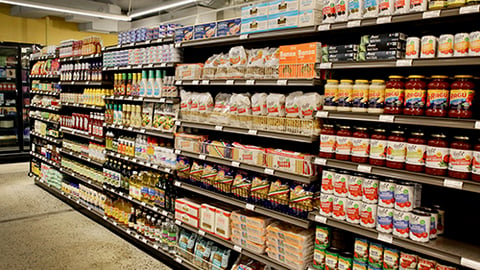Grocers Are NOT Fabricating a Crisis
OPINION: EDITOR'S NOTE
A few months ago, I was fortunate enough to attend the Retail Industry Leaders Association (RILA) Asset Protection Conference, in Denver. The event featured a plethora of retailers, including many grocers, speaking about the security and theft challenges they’re facing in their physical locations (and online).
But they weren’t just talking about the challenges. They brought video, lots of video. Of angry shoppers throwing large items like small appliances at cashiers in an attempt to hurt them. Of shoppers pointing guns at employees while exiting the store, taking a cartful of merchandise without paying for it. Of people getting into shootouts and fistfights in parking lots. Of a man holding a large axe – yes, an axe – that he grabbed from the garden department and holding it near the head of a store manager.
If you work in retail or talk to retailers, then you know that this industry is facing unprecedented challenges when it comes to violence and theft. That’s why I was stunned to read Stacy Torres’ August opinion column in The Los Angeles Times headlined: “Grocery stores used to be my happy place. Then they started locking up the detergent.”
Torres writes that grocery stores “used to be happy places,” but measures such as “locked glass cabinets … erode customers’ spirits and our social fabric, even though it’s unclear whether shoplifting has become the national crisis that some retailers claim.”
Truly a National Crisis
It’s crystal clear, however, that violence and theft in retail stores have become a national crisis. I invite Torres to read Progressive Grocer’s July 2023 special report on asset protection, written by Multimedia Editor Emily Crowe. According to the National Retail Federation’s (NRF) 2022 National Retail Security Survey, overall retail shrink, when taken as a percentage of total retail sales in 2021, accounted for $94.5 billion in losses, up from $90.8 billion in 2020. According to the survey, external theft, excluding organized retail crime (ORC), has become a greater priority for 74.1% of executives, and ORC specifically has become a greater priority for 70.7% of executives. The survey asked participants how much ORC incidents had increased at their organizations between 2021 and 2022. On average, retailers reported that ORC incidents had increased 26.5% between 2021 and 2022.
The NRF survey also showed that eight out of 10 retailers reported increased incidents of violence and aggression this past year. Specifically, customer-on‑employee violence has become a greater priority for 77.6% of participating executives, according to the survey.
At the RILA conference, Jacob Gillette, regional asset protection manager for the eastern region at Meijer, told the audience that there has been a 400% increase in “reported customer threats” since 2018, with a sharp jump between 2021 and 2022. The threats aren’t just a problem for retail staff, they’re also a problem for shoppers. An internal Meijer survey showed that customers are extremely anxious and worried about their safety in stores (specifically at the checkout and in parking lots); in response, retailers are rolling out more diverse security measures.
There are myriad reasons why violence and theft are increasing at retail, and there are myriad reasons why these are difficult problems to solve. I recommend that Torres read all of the work that FMI – The Food Industry Association, RILA, the National Retail Federation (NRF), the National Grocers Association (NGA) and other trade groups, along with the law enforcement, social justice and other communities, are doing to help retailers solve these problems with the urgency and compassion that they deserve.
Accusing retailers of fabricating a crisis to make shopping less of a pleasure is absurd. The last thing retailers want to do is add friction to the path to purchase. Torres says that she enjoys the experience at grocers such Trader Joe’s, Smart & Final, and Nob Hill Foods. As an admirer of grocery stores, Torres should support the endless efforts of retailers to keep their customer experiences enjoyable – and safe.






